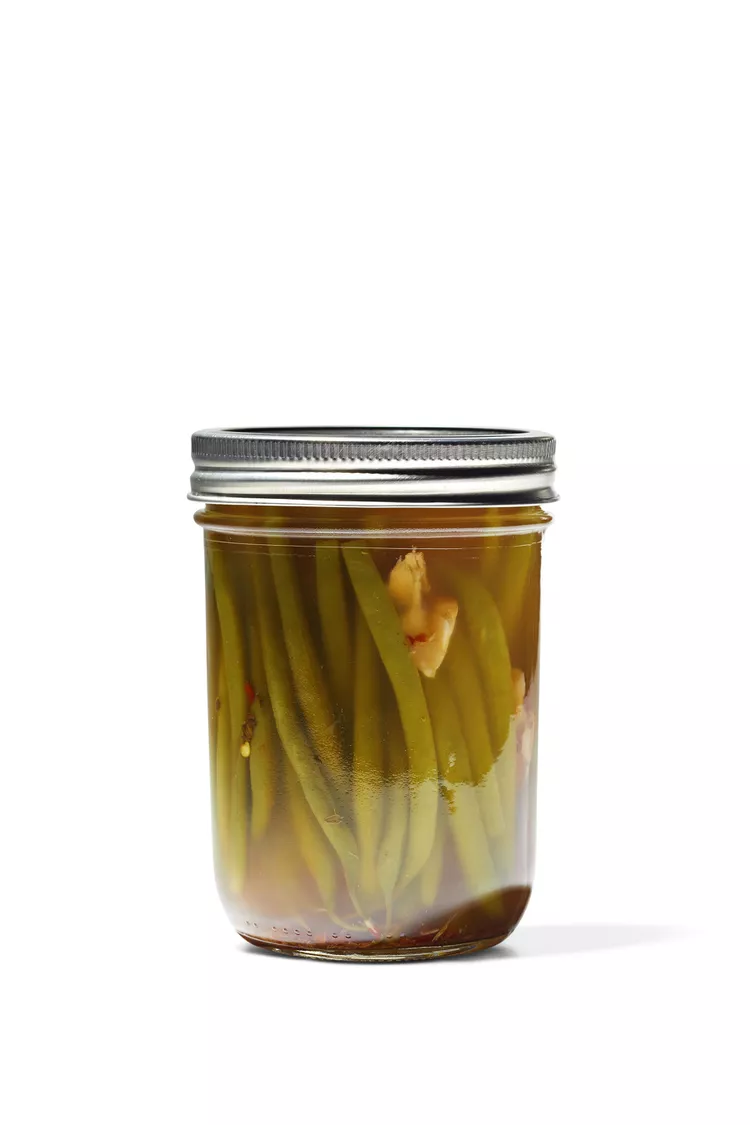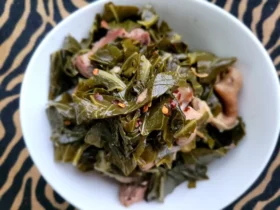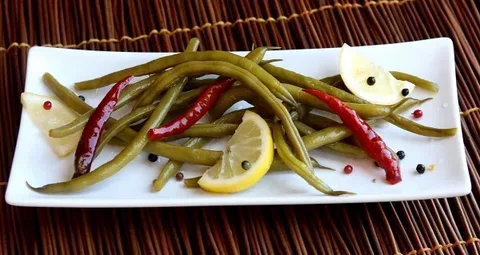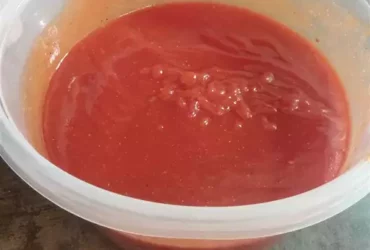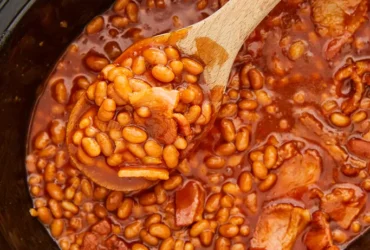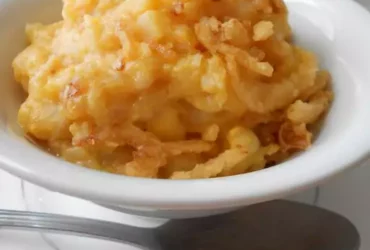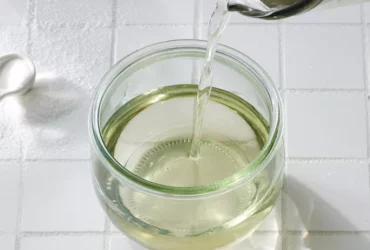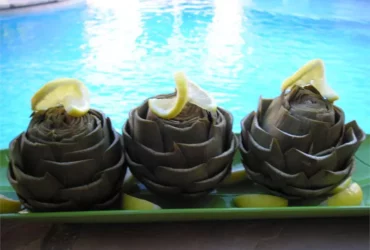Ingredients
Fresh Green Beans
Fresh green beans are a crucial ingredient for this recipe, providing a crunchy texture and a burst of freshness to balance out the spicy flavors.
The type of green bean used can vary depending on personal preference and regional availability, but common varieties include:
- French filet beans: slender, tender beans with a delicate flavor
- Cascadia beans: slightly thicker, with a more robust taste
- Snow peas: flat, sweet pods that work well in pickling
Fresh green beans should be chosen for their quality and freshness. Opt for beans that are:
- Firm and crisp, without any signs of wilting or softness
- Free from blemishes, bruises, or yellowing
- Glistening with dew or moisture, indicating they’ve been stored properly
To prepare the green beans for pickling, trim off both ends and cut them into desired lengths. This can range from bite-sized pieces to longer, more elegant spears.
Fresh green beans are a staple in many cuisines, packed with fiber and vitamins. The American Heart Association recommends 4 servings of vegetables per day for optimal health (AHA, 2020).
When it comes to cooking with green beans, having a variety of ingredients on hand can make all the difference. Here are some essential ingredients to keep in your pantry:
Fresh green beans
As mentioned earlier, fresh green beans are the star of this recipe. Choose slender, tender green beans that fit your desired level of crunch.
Vegetable oil or other neutral oil: A light, neutral-tasting oil is perfect for sautéing and preserving the pickled flavor.
Pickling spice blend
A well-balanced mix of spices, including mustard seeds, coriander seeds, dill seeds, cayenne pepper (or red pepper flakes), salt, and black peppercorns. You can find pre-mixed blends or make your own.
Vinegar
Choose a vinegar with a mild flavor to complement the green beans, such as white wine vinegar, apple cider vinegar, or plain distilled white vinegar. For this recipe, we recommend using apple cider vinegar for its sweet and tangy taste.The acidity of vinegar is what makes pickling possible, so choose wisely. If you prefer a slightly sweeter flavor, use more apple cider vinegar than the recipe calls for. Similarly, if you like it tangier, use less or no sugar at all in this Spicy Pickled Green Beans Recipe!
Sugar
You can omit this ingredient completely if you don’t want any added sweetness in your pickles.A little bit of sugar helps balance out the flavors and adds a touch of natural sweetness without overpowering the green beans. Use less or no sugar according to your taste, but keep it minimal for an authentic Spicy Pickled Green Beans Recipe experience!
Garlic
Choose one small clove per pound of green beans or adjust based on how strong you like garlic flavor in your pickles.If you’re a garlic lover, mince two to three cloves instead. Be careful not to overpower the delicate taste of fresh green beans.
Now that we have our ingredients ready, let’s dive into the recipe for Spicy Pickled Green Beans and learn how to create this mouth-watering treat step by step!
Spice Mixture
To create a delicious and aromatic spice mixture for our Spicy Pickled Green Beans recipe, you will need the following ingredients:
- Garam Masala: This Indian-inspired spice blend adds warmth and depth to our pickles. You can find it in most supermarkets or online.
- Ground Cumin: Providing a earthy and slightly bitter flavor, ground cumin is essential for balancing the heat of our pickles.
- Smoked Paprika: With its rich, smoky flavor, smoked paprika adds depth and complexity to our pickling spice blend.
- Cayenne Pepper: For those who like a little heat in their pickles, cayenne pepper is the perfect addition. Use it sparingly or omit for a milder pickle.
- Mustard Seeds: These tiny seeds add a pungent flavor and crunchy texture to our pickles. Brown mustard seeds are preferred over yellow mustard seeds for their stronger flavor.
- Coriander Seeds: With its citrusy, warm flavor, coriander seeds complement the other spices in our blend perfectly.
- Cinnamon Powder: Adding a hint of sweetness and warmth, cinnamon powder rounds out the flavors in our pickling spice mixture.
- Black Pepper: A classic peppercorn flavor that adds depth to our pickle spice blend without overpowering it.
- Garlic Powder: For those who want a hint of savory, garlic powder is the perfect addition. Use it sparingly as it can quickly become too strong.
Naturally, you can adjust the proportions and ingredients in this blend to suit your personal taste preferences. This combination is designed for the Spicy Pickled Green Beans recipe but feel free to experiment with different variations.
A blend of spices including salt, sugar, garlic powder, onion powder, and red pepper flakes will add depth to the dish.
The key to elevating a simple dish like green beans is to add depth with a blend of spices that complement their natural flavor. A combination of salt, sugar, garlic powder, onion powder, and red pepper flakes will add a savory and slightly sweet element to the pickled green beans.
The salt serves as a preservative and helps to bring out the natural flavors of the ingredients. It also enhances the texture of the green beans by reducing their bitterness and adding a touch of umami flavor.
The addition of sugar balances out the savory flavors in the dish, creating a well-rounded taste experience. The garlic powder adds a subtle depth to the flavor, while the onion powder provides a slightly sweet and nutty undertone.
However, the real star of the show is the red pepper flakes, which add a spicy kick that will leave your taste buds tingling. Be careful not to add too much, as it can quickly overpower the other flavors in the dish.
To get the most out of this blend, be sure to mix the spices together well before adding them to the green beans. This will ensure that each bite is infused with a balanced and harmonious flavor profile.
Preserving Liquid
When making spicy pickled green beans, selecting the right Preserving Liquid is crucial for achieving the perfect balance of flavors and textures.
The Pickling Liquid, also known as the preserving liquid, typically consists of a mixture of water, vinegar or another acidic ingredient, salt, sugar, and spices. In this recipe, we use a combination of white wine vinegar and water to create our pickling liquid.
The ratio of vinegar to water is a common point of debate among pickle enthusiasts. Some argue that a higher acidity level helps preserve the vegetables and adds a tangy flavor, while others prefer a milder taste with more water in the mix.
For this recipe, we suggest using 1 part white wine vinegar to 2 parts water, resulting in a pickling liquid with a moderate acidity level. However, feel free to adjust the ratio according to your personal preferences and desired flavor profile.
Other key ingredients included in our pickling liquid are granulated sugar, salt, garlic powder, and red pepper flakes. These components not only add depth and complexity to the dish but also help create a crunchy texture and an enticing aroma.
The granulated sugar adds sweetness and helps balance out the acidity from the vinegar. Salt enhances the flavors of the other ingredients while preventing bacterial growth in the pickling liquid.
Garlic powder contributes a subtle, savory taste that complements the spices without overpowering them. Red pepper flakes introduce a spicy kick, which can be adjusted to suit your desired level of heat.
In addition to these basic ingredients, feel free to experiment with other seasonings and spices to create unique flavor variations.
White vinegar and water are commonly used as a preserving liquid in pickling recipes. According to the USDA, acidified foods like pickles can be safely preserved at home (USDA, 2015).
When it comes to preserving ingredients for pickling recipes like the Spicy Pickled Green Beans, white vinegar and water are commonly used as a liquid base. This acidic solution helps to create an environment that inhibits the growth of bacteria and other microorganisms, ensuring the safety of the pickled product.
The use of acidified foods in home preservation is supported by the United States Department of Agriculture (USDA), which provides guidelines for safe canning and preserving practices. According to the USDA’s 2015 recommendations, properly prepared and processed pickles can be safely stored at home without risk of spoilage or foodborne illness.
The combination of white vinegar and water serves several purposes in pickling recipes. The acidity of the vinegar helps to balance the pH level of the mixture, creating an environment that is unfavorable for the growth of harmful microorganisms. This process is known as acidification, and it is a critical step in ensuring the safety and quality of the final product.
The ratio of white vinegar to water can vary depending on personal preference and the specific recipe being used. However, a general rule of thumb is to use a mixture that is at least 5% acidity, which is equivalent to a solution of 1 part white vinegar to 9 parts water. This will provide an adequate level of acidity while still allowing for a balanced flavor.
It’s worth noting that the use of salt in pickling recipes can also contribute to acidification by drawing out moisture and creating an environment that is less hospitable to bacterial growth. However, when combined with the acidic properties of white vinegar, the resulting mixture becomes even more effective at preserving food safely.
In summary, the combination of white vinegar and water serves as a critical ingredient in pickling recipes, providing both flavor and acidity that are essential for safe preservation. When used in accordance with recommended guidelines, such as those provided by the USDA, properly prepared pickles can be safely stored at home without risk of spoilage or foodborne illness.
- Best LeadsGorilla Alternatives for 2025 - April 22, 2025
- Best Leadzai Alternatives for 2025 - April 22, 2025
- Best LeadSwift Alternatives for 2025 - April 21, 2025

